9 Best Polarized Sunglasses in 2024 – Reviews and Top Picks
Last Updated on
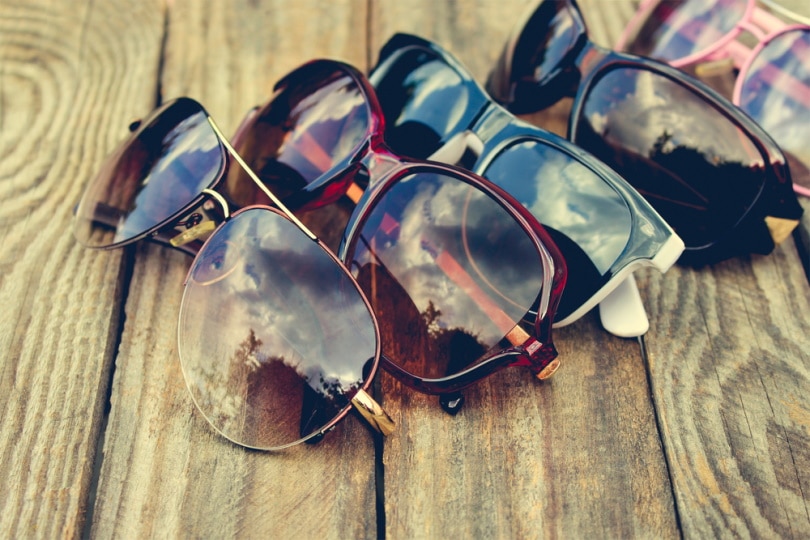
If you’re looking to get outside on a bright, sunny day you’ll regret not picking up a pair of polarized sunglasses. Polarization is to help with glare or bright reflections on shiny surfaces like water or metal. We’ve put together a list of the best lenses out there for all occasions—fishing, walking on the beach, hiking, you name it. Plus, they work during any time of year. Stay tuned!

A Glance at Our Winners in 2024
| Image | Product | Details | ||
|---|---|---|---|---|
| Best Overall |
 |
Sixty-One Solaro |
|
CHECK PRICE |
| Best Value |
 |
Filthy Anglers Tenkiller |
|
CHECK PRICE |
| Premium Choice |
 |
Ray-Ban RB3684CH |
|
CHECK PRICE |
 |
GQUEEN Classic Horn-Rimmed |
|
CHECK PRICE | |
 |
Sixty-One Picchu |
|
CHECK PRICE |
The 9 Best Polarized Sunglasses
1. Sixty-One Solaro – Best Overall
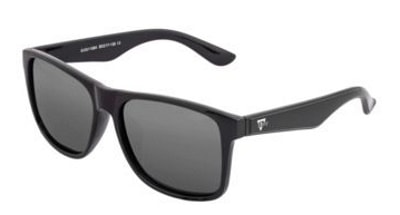
| Materials | Acetate |
| Lens width/diameter | 55 millimeters |
Sixty-One Solaro glasses are the best overall polarized sunglasses on our list. They combine a great look for any scenario, whether you’re out fishing or going for a stroll in the park, with amazing quality. Their stainless-steel hinges make them a life-long investment, and they feel like they aren’t even there. Plus, anti-scratch and anti-fog coatings are integrated into the lenses for clear viewing and durability.
These glasses are priced lower than the average high-end pair you’d find, although they still aren’t a budget-friendly option. We can recommend these to anyone due to their versatility and good-looking design.
- Stylish
- Quality materials
- Stainless-steel hinges
- Lightweight
- Expensive
2. Filthy Anglers Tenkiller– Best Value
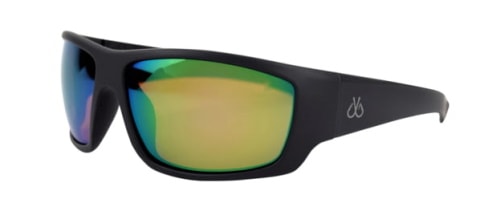
| Materials | Nylon |
| Lens width/diameter | 65 millimeters |
If you’re looking for a pair of affordable lenses that can protect your eyes from glare and harsh sunlight, these are the best polarized sunglasses for the money. That’s because, for such a low price, you get all the functionality from higher-quality options and then some.
Since they are geared towards fishers (hence the name), they were built to float on water in case you drop them overboard. That will save you a lot of headaches and money despite its shortcomings. The downside to this product is that it’s a bit bulky and heavy on the ears.
- Float on water
- Inexpensive
- Durable
- Protective case included
- Bulky
3. Ray-Ban RB3684CH – Premium Choice
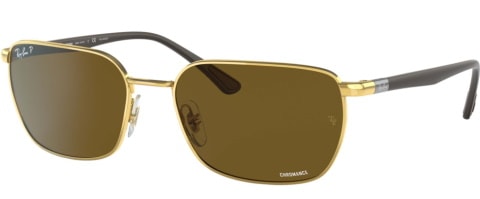
| Materials | Metal, plastic |
| Lens width/diameter | 58 millimeters |
Ray-Ban is the industry giant that makes luxury eyewear for consumers looking for a quality pair of polarized glasses. This model specifically boasts a metal-framed construction, which is both great-looking and tough to break.
The temple and ear area of these sunglasses are made of plastic, though, because metal can be uncomfortable on hot summer days or cold winters. That isn’t a bad thing in this case. They are still built with a high level of manufacturing standards. Of course, with a name brand like Ray-Ban, you’ll be paying for their logo on the front, so it isn’t for the budget-minded.
- Name brand
- High quality
- Elegant metal design
- Expensive
4. GQUEEN Classic Horn-Rimmed
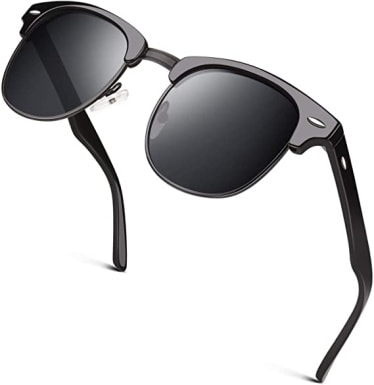
| Materials | Polycarbonate |
| Lens width/diameter | 50 millimeters |
Rather than spending a fortune for a pair of designer polarized shades, you can always get a cheap pair that performs exactly as intended. GQUEEN has a set of sunglasses with a classic, horn-rimmed style that almost anyone will enjoy. They feature an anti-slip silicone nose rest, in addition to a shatterproof and scratch-resistant lens.
Unfortunately, they aren’t the highest quality, so they don’t feel premium and may break easily. You can’t go wrong with them, though, so it’s a good option if you want to get several for multiple people without breaking the bank. Still, don’t expect the same level of quality as others!
- Fashionable
- Affordable
- Shatterproof
- Break easily
- No anti-fog coating
5. Sixty-One Picchu
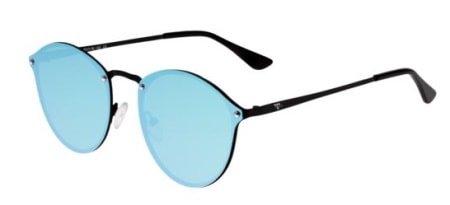
| Materials | Aluminum |
| Lens width/diameter | 60 millimeters |
The modern and frameless build of these Picchu glasses is alluring by itself, with several colors to choose from. Sixty-One’s second pick on our list has an all-aluminum construction so it holds up well. There are adjustable nose pads and spring-activated hinges as well, which is a nice touch.
With this in mind, the lenses do tend to be more exposed to shattering or scratches if you drop them since there is more surface area that can be damaged. They are on the premium end of the market in terms of their price point, but overall, they’re great for everyday use.
- Sleek and minimal design
- Durable metal construction
- Anti-fog and anti-scratch coatings
- Slightly expensive
- Can shatter easily if dropped
6. TOREGE Sport Sunglasses
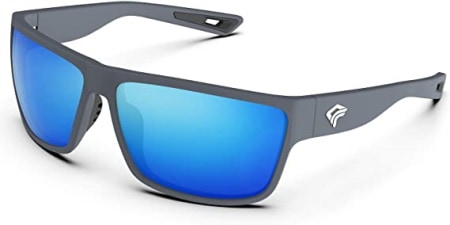
| Materials | TR90 thermoplastic |
| Lens width/diameter | 65 millimeters |
Those who live near the ocean will love the TOREGE Sport Sunglasses. Not only are they polarized, but their coatings also prevent corrosion caused by salty seawater. Plus, the nose pads have venting holes for sweat or moisture that seeps underneath.
It’s a disappointment that they didn’t make these float like the Filthy Anglers do because they were made for activities out on the water. If they did, they would likely be our choice for our best value spot. Either way, they are still fantastic for their purpose, and we’d recommend these to any seafarers out there who need protection against a full day of sunlight on the water.
- Fairly priced
- Durable TR90 build
- Flexible frame
- Don’t float
- Can be uncomfortable for larger heads
7. Ray-Ban RB3672
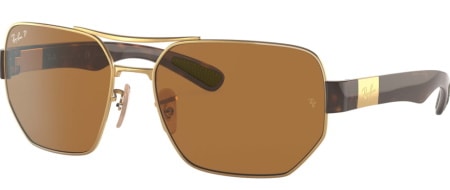
| Materials | Metal, plastic |
| Lens width/diameter | 60 millimeters |
Ray-Ban’s RB3672 model of polarized glasses is for a particular type of demographic. They truly look elegant on most face shapes, exhibiting stunning colors and gorgeous craftsmanship. On both of the individual lenses, you’ll see the Ray-Ban logo etched into the surface. So, if you want that distinct and luxurious look, these are the ones to get.
These glasses don’t come cheap, though, and the lenses are actually made of plastic. Keep in mind that only certain color variations have polarization, whereas others do not.
- Stylish
- Metal build
- Expensive
- Plastic lenses
- Limited color options
8. Wiley X CENSOR Black Ops Edition
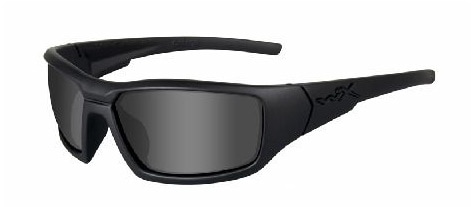
| Materials | Not specified |
| Lens width/diameter | 61 millimeters |
Dark tints are a popular choice among many eyewear enthusiasts, and the Wiley X CENSOR Black Ops Edition is a good fit for people who want to be low-profile. The lenses are shaped in a rectangular fashion but provide a good field of view.
The kit comes with a leash cord, cleaning cloth, and carrying case for maintenance. Wiley X claims that this set is shatterproof according to ANSIZ87 and OSHA ratings, so you can have some peace of mind when wearing them while being active. They aren’t budget-friendly, and there are plenty of alternatives for a lower price out there. Plus, the features aren’t anything special compared to other picks.
- Leash, cloth, and case included
- Durable
- Expensive
9. Nitrogen Wrap Around Sport Sunglasses
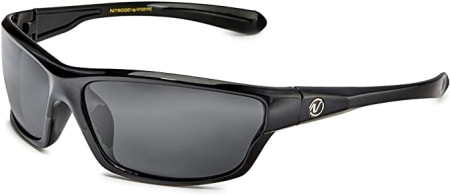
| Materials | Plastic |
| Lens width/diameter | 66 millimeters |
At the bottom of our list is what you’d expect if you were to get a pair of lenses at the grocery store or supermarket without much care for quality. These are only recommended for outdoor lovers that need sun protection in a pinch, or if you need a backup pair in the event that their better set of shades breaks or is lost.
They’re quite barebones, and there is no real nose rest or adjustability. Both the frame and the lenses are made of plastic, so they won’t hold up super well against scratches or drops.
- Affordable
- Plastic frame and lens
- The nose area can be uncomfortable
- Not adjustable

Buyer’s Guide: Buying the Best Polarized Sunglasses
It’s important to consider what makes a good pair of sunglasses, so we’ll go into detail about what things you should look out for when making a purchase.
Field of View
The thing that most people overlook is whether or not sunglasses provide good angles for you to see. Obstructive glasses will limit your ability to see what’s around you, which nobody really wants when out working or being active.
Sizing
Sunglasses are meant to be comfortable, so it’s only natural that they should fit your face perfectly. Glasses are generally made for the average person and fit most people. However, some may have smaller or larger heads.
Measuring your temple width and the length from your ears to your eyes can be quite beneficial and can save you the hassle of trying a multitude of different pairs.

Protective Coatings
Scratches, perspiration, and UV rays can be mitigated when you buy a pair with special coatings for each of these purposes. UV films are an expectation for polarized lenses, and anti-scratch layers will ensure they are long-lasting.
Lens Materials
The fact is that plastic and glass are both great for eyewear but have their strengths and weaknesses. Plastic is much harder to break and it’s both cheaper and lighter to wear. However, glass lenses can be more durable against scratches and have a more elegant style.

Frame Materials
High-quality products are made of high-quality materials. That’s why you’ll want to avoid thin and cheap plastic. Metal is great for durability but is often more expensive and could get uncomfortably hot when exposed to sunlight in the summer. Wood can be a great option, but it’s generally harder to find these glasses in stock.
Replaceability
If you’ve got expensive sunglasses, having the option to replace the lenses individually will save you a decent chunk of change. You can even swap out certain types of lenses for others, like photochromic or darkened tints. Scratches are inevitable in some scenarios, so this can be a deciding factor.

Styles
This one’s up to you to decide, but there is a purpose behind each pair of glasses. For every occasion, there’s a look that may fit your other accessories or clothing. For example, if you’re doing sports, Ray-Bans are probably not the best choice. However, they could work if you’re out for a stroll with your friends and are dressed to impress. Also, there are innumerable colors and frame shapes that you can pick from, so choose what suits you best!

Results
Our best overall polarized glasses have to be the Sixty-One Solaros because of their style, price, and high-quality materials. The best value shades are the Filthy Anglers, which have awesome capabilities like floatation and durability. If you have some extra money to spend, Ray-Ban is a timeless brand and has the style and craftsmanship to prove its worth.
At this point, buying glasses can seem overwhelming with the copious styles and brands out there, but we hope this list helps you choose some that are right for you and will protect your eyes against the Sun’s harsh UV rays.
Featured Image credit: Victoria 1, Shutterstock
About the Author Robert Sparks
Robert’s obsession with all things optical started early in life, when his optician father would bring home prototypes for Robert to play with. Nowadays, Robert is dedicated to helping others find the right optics for their needs. His hobbies include astronomy, astrophysics, and model building. Originally from Newark, NJ, he resides in Santa Fe, New Mexico, where the nighttime skies are filled with glittering stars.
Related Articles:
Holy Stone Drone Review of 2024 – Pros, Cons, and Verdict
Ultraviolet Light vs Black Light: What’s the Difference?
Light Waves vs. Sound Waves: How Are They Different?
Infrared vs. Thermal Cameras: How Are They Different?
Far Infrared vs Near Infrared: What’s The Difference?
Mottled Duck vs. Mallard vs. Black Duck: What’s the Difference?
Shutter Speed vs Frame Rate: Pros, Cons, & Difference
Oriole vs Goldfinch: How to Tell the Difference



